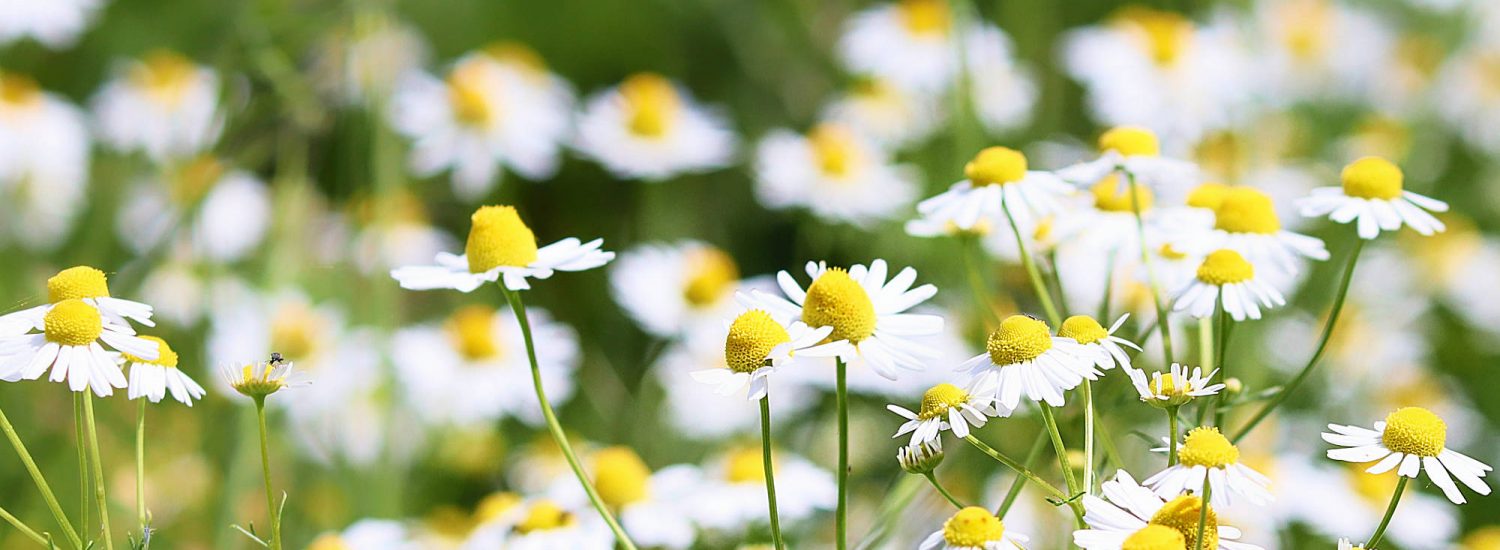This little plant packs a real punch !

What it looks like
Roman (or English) Camomile has white daisy-like flowers with yellow centres and feathery leaves.
It is thought that the name camomile originates from the Greek words kamai (on the ground) and melon (apple), referring to the ground-creeping habit of the plant and its distinctive sweet apple-like odour.
It is thought that the name camomile originates from the Greek words kamai (on the ground) and melon (apple), referring to the ground-creeping habit of the plant and its distinctive sweet apple-like odour.
Traditional Uses
Roman Camomile oil is traditionally used as a relaxant
and antidepressant. It has been used to reduce preoperative
anxiety, and also to help relieve the mood swings associated
with premenstrual syndrome (PMS). The tea is given as an
intestinal relaxant, particularly suitable for colic in babies.
Why it works
Chamomile contains powerful anti-oxidants including polyphenols and phytochemicals. When applied to the skin, it may help reduce signs of ageing by protecting the skin from free radical damage. “It accelerates cell and tissue renewal, reducing the appearance of fine lines and giving skin a youthful glow,” The active compounds in the oil also have calming and antidepressant effects that can alleviate nervous disorders and depression.
Our products
Whenever we’re formulating our products, it’s really important to us that we keep the traditional uses alive, as we have lost many of the traditional remedies.
Harketae Green products that use Camomile might be of interest to you.